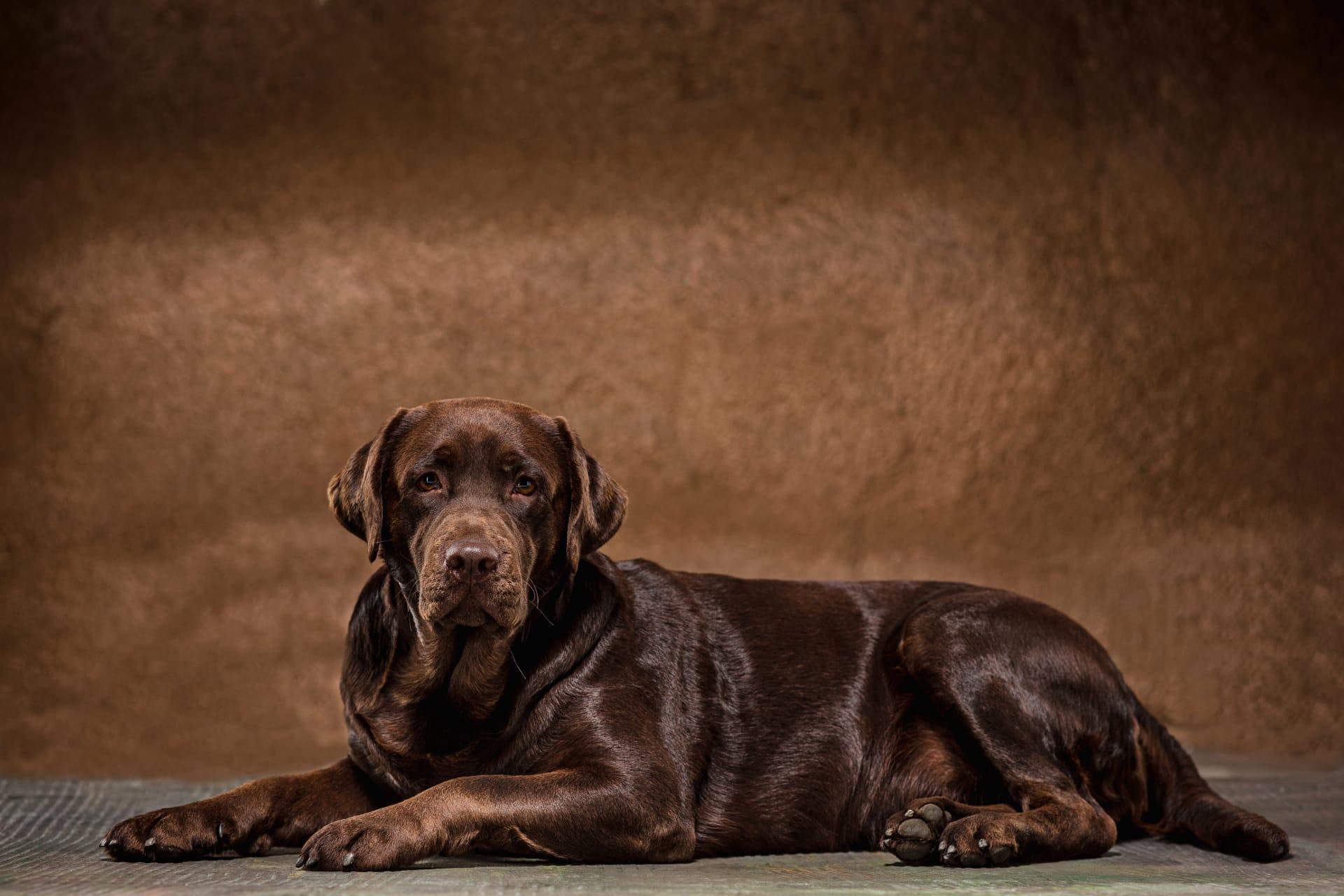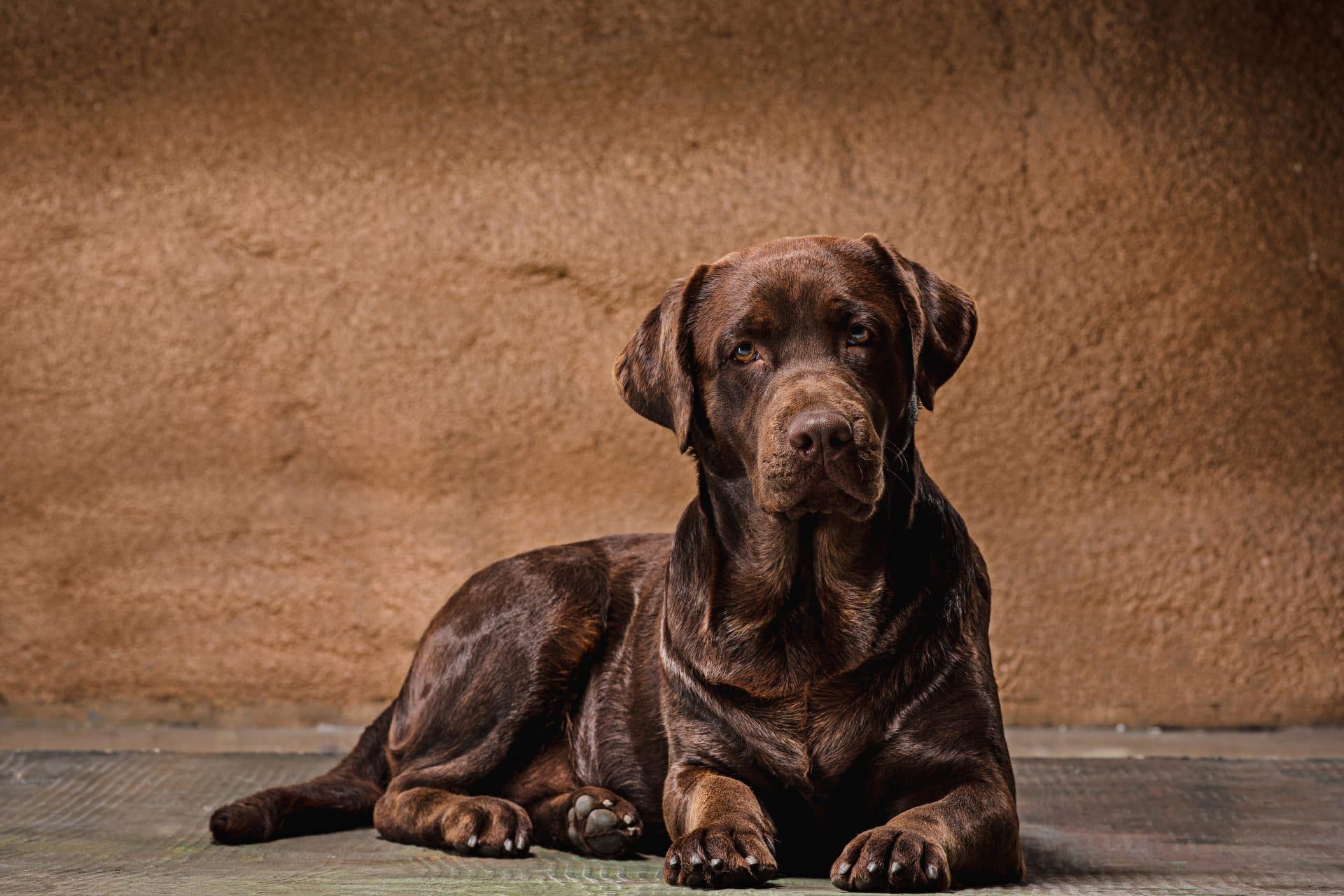Chocolate Lab Characteristics
- Home /
- Mini Encyclopedia /
- Animal /
- Chocolate Lab Characteristics
1
Chocolate Labrador Retrievers, commonly known as Chocolate Labs, are beloved for their rich, glossy coats that come in shades ranging from light brown to a deep chocolate hue. These dogs are sturdy and robust, with males typically weighing between 65 to 80 pounds (29 to 36 kilograms) and standing 22.5 to 24.5 inches (57 to 62 centimeters) tall at the shoulder. Females are slightly smaller, weighing 55 to 70 pounds (25 to 32 kilograms) and standing 21.5 to 23.5 inches (55 to 60 centimeters) tall. Their lifespan ranges from 10 to 12 years, a testament to their generally robust health when properly cared for.
The most remarkable organ of a Chocolate Lab is arguably its nose. This breed's olfactory capabilities are extraordinary, with the ability to discern and follow scents making them invaluable in roles such as search and rescue operations, hunting companions, and as detection dogs. A Chocolate Lab's nose has as many as 300 million olfactory receptors, in comparison to a human's mere 5 to 6 million, enabling them to detect scents at levels that are undetectable to humans. This powerful sense of smell is not just for tracking; it plays a critical role in their interaction with their environment and their ability to perform tasks that require a high degree of scent discrimination.

2
Question: What's the most common health issue in Chocolate Labs?
Answer: Chocolate Labs are generally healthy, but like all breeds, they're prone to certain health conditions. One of the most common issues is hip dysplasia, a genetic condition where the thighbone doesn't fit snugly into the hip joint. Symptoms can range from discomfort to lameness on one or both rear legs, and the condition can lead to arthritis. According to veterinary studies, hip dysplasia affects a significant portion of Labrador Retrievers, though screening and responsible breeding practices can help reduce the risk. Regular vet check-ups and maintaining a healthy weight can also mitigate potential discomfort and mobility issues associated with this condition.

3
Chocolate Labs are known for their high energy levels and need for regular, vigorous exercise. They thrive on activities such as running, swimming, and fetching. A typical adult Chocolate Lab requires at least one hour of physical activity daily to maintain their health and happiness. Their love for water makes swimming an excellent form of exercise and enjoyment for these dogs. Without adequate exercise, Chocolate Labs can become bored and may exhibit destructive behaviors.
When it comes to feeding, Chocolate Labs are known for their hearty appetites. They do well on high-quality dog food, whether commercially manufactured or home-prepared with your veterinarian's supervision. Given their propensity to gain weight, it's crucial to monitor their food intake and ensure they're fed according to their age, size, and activity level. An adult Chocolate Lab typically requires about 2.5 to 3 cups of dry dog food per day, divided into two meals. However, this can vary based on their individual energy expenditure.

4
Chocolate Labs are adaptable dogs that can thrive in various living environments, as long as they have enough space to move around and access to outdoor activities. They are well-suited to family living, showing a remarkable ability to integrate into households and communities. These dogs perform best when they have access to a backyard or nearby parks where they can exercise freely. However, with sufficient daily exercise, they can also adapt to apartment living.
Reproduction-wise, Chocolate Labs are prolific breeders, with females capable of whelping litters of 6 to 8 puppies on average. Responsible breeding practices are essential to ensure the health and well-being of both the mother and her puppies. Breeders should conduct health screenings for common genetic conditions like hip dysplasia, elbow dysplasia, and eye conditions to promote the health of the breed. Socialization and early training are crucial for puppies to develop into well-adjusted adult dogs.

5
Book: "The Labrador Retriever Handbook" by Betsy Sikora Siino. Published in the United States in the early 2000s, this book offers a comprehensive look into the world of Labrador Retrievers, including the Chocolate Lab. Siino delves into the breed's history, characteristics, care, and training, providing a well-rounded guide for current or prospective Lab owners. It's praised for its practical advice and insights into the breed's unique qualities.
Book: "Labrador Retrievers for Dummies" by Joel Walton and Eve Adamson. This accessible guide, part of the popular 'For Dummies' series, provides a wealth of information on raising, training, and caring for Labrador Retrievers, including the Chocolate variety. Published in the United States, it covers everything from basic training principles to specific health care tips, written in an engaging and easy-to-understand style. The authors offer valuable insights into ensuring a Lab's physical and emotional well-being, making it an essential read for new and experienced Lab owners alike.